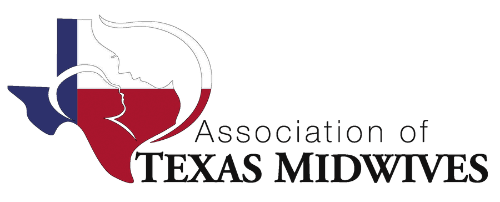Guidelines for Supervising Midwifery Students
We would like to remind both preceptors and students of the key guidelines that ensure safe, legal, and effective supervision. These guidelines are in place to honor the legacy of the midwives who have paved the way for us, as well as to foster an environment where integrity and pride are central to teaching the next generation of midwives.
Dedicated preceptors and students in the midwifery field are integral to the future of midwifery care. The mentorship from preceptors is essential in providing hands-on training and supervision to students. The dedication of students to learning and practicing under supervision shapes the future of midwifery. Together, we can maintain the highest standards set forth by the Texas Department of Licensing and Regulation (TDLR), the North American Registry of Midwives (NARM), and the Association of Texas Midwives (ATM).
NARM and TDLR Guidelines for Supervision
Scope of Practice & Direct Supervision
Students must be trained within the legal scope of midwifery practice as outlined by TDLR Chapter 115, covering all aspects of midwifery care (prenatal, intrapartum, postpartum, and newborn care). It's important to note that the scope of practice for a Certified Nurse Midwife (CNM) differs from that of a Licensed Midwife (LM). Preceptors, your responsibility is to provide direct supervision, meaning you must be physically present in the same room and immediately available to assist or guide the student.
Examples of this supervision include:
Prenatal Examination: Observe and guide students through the entire process.
Labor Management & Delivery: Offer hands-on guidance as needed.
Postpartum & Newborn Care: Ensure students follow correct procedures while under your direct supervision.
At no point should students be left alone in a clinical setting. This ensures both student learning and client safety.
Informed Client Consent for Supervised Care
Students must inform clients that their care will be provided under supervision. TDLR has introduced the "Midwife Client Consent to Services Provided by a Student" form, which outlines this requirement. Both preceptors and students should familiarize themselves with this document, which includes:
The need for direct supervision by a licensed preceptor during all clinical experiences.
The student's limitations, such as not advertising as a midwife or receiving compensation for services.
Written client consent for all services provided by students under supervision.
Students should be aware that all services performed—whether or not they count toward their education—must follow these guidelines, and clients must be fully informed of their student status.
Handbook Review and Open Communication
Both preceptors and students are encouraged to regularly review the Preceptor Handbook and the Student Policy Handbook to ensure clarity in roles, responsibilities, and expectations. Clear and open communication between students and preceptors is crucial for a successful training experience.
Preceptor Supervision as Defined by ATMMTP
Preceptors must be physically present in the room during all student-provided care.
Any preceptor who signs off on clinical activities they did not directly witness risks losing both their preceptor status with ATMMTP and their CPM credential.
Student Guidelines for Practicing Midwifery
Students found practicing midwifery without a license, including attending unassisted births, will be immediately dismissed from the program.
Students should always ensure their actions align with TDLR, NARM, and ATMMTP guidelines, which define supervision as requiring a preceptor to be physically present in the same room.
Upholding High Standards
Your commitment to this profession is invaluable. For preceptors, your role in guiding and mentoring students directly influences the quality of future midwives. For students, your dedication to learning ensures that you will become competent and compassionate midwives, colleagues we will all be proud of. By following the guidelines set forth by TDLR, NARM, and ATMMTP, we ensure that we continue to provide the highest standard of midwifery care.
If you have any questions or need further clarification, please do not hesitate to contact Jasmin Kanevski, ATMMTP Education Director, at atmmtpdirector@texasmidwives.com.

